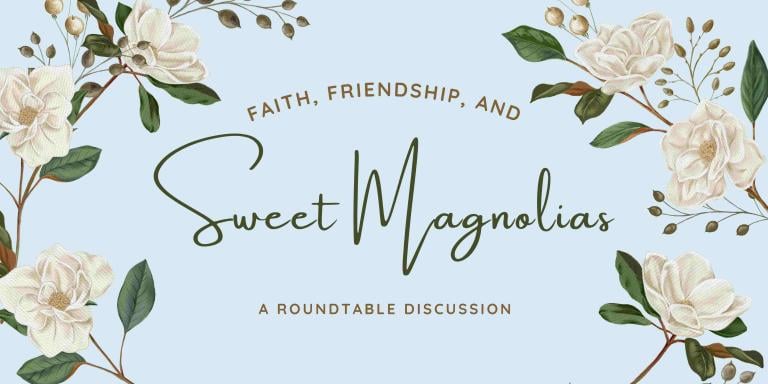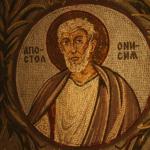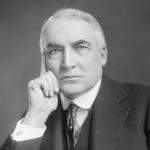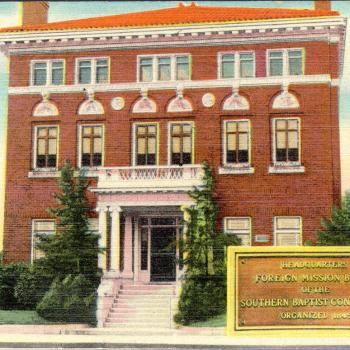Friendship, family, and faith: these are central themes in Sweet Magnolias, the popular Netflix drama series that follows the lives of three lifelong friends in the fictional community of Serenity, South Carolina. First appearing amid the chaos of 2020–when Americans were grappling with a global pandemic, a month of protests against racism and police violence, and a contentious presidential election–the show has offered viewers the chance to escape into a simpler world, where almost any problem could be solved by having a gentle talk with a loving pastor or spending an evening sipping margaritas with girlfriends.
Of course, the world is more complicated than that, and the release of the third season last week offers an occasion to offer critical reflection on the show, especially regarding one of its most salient features: its depiction of religious life in the American South.
To discuss Sweet Magnolias, I’ve assembled a panel of religious studies scholars who watch the show to offer commentary: Samira Mehta of the University of Colorado, Boulder; Shari Rabin of Oberlin College; Adrienne Krone of Allegheny College; and myself. So, pour yourself a margarita (a sweet tea would also be fine) and enjoy–but know that there are a few spoilers, so you might want to watch the full three seasons first.
Sweet Magnolias and the Allure of a Racial Utopia
Samira Mehta
One of my favorite things about Sweet Magnolias is that the show portrays a racial utopia. Serenity, South Carolina, is the most racially integrated place I have ever seen in all my born days. The story focuses on an interracial friend group of two white women, Maddie and Dana Sue and a Black woman, Helen. These women are aunts to each other’s children and are in and out of each other’s homes and emotional lives. They pick each other up off the floor after heartbreak. Not only that, but their rivals are another interracial friendship—the Black newspaper editor, Peggy, and the white mayor’s white wife, Mary Vaughn. Helen has a longstanding off-again, on-again romance with a childhood sweetheart—and while her loved ones worry about the relationship, they do not worry about the fact that she is Black and he is white. Yes, most of the actual marriages are racially homogenous, but the community is not. This is portrayed as a real community—friends are in and out of each other’s homes and business, with genuine care.
Perhaps the most striking images of integration are the church. If Martin Luther King famously said almost sixty years ago that Sunday morning is the least integrated time in the nation, a study by the Public Religion Research Institute released this spring demonstrated that King’s observation largely remains true today. Not so in fictional Serenity, in which almost all of the main characters attend the same congregation, regardless of their race. Black, white, and occasionally Asian, the people of Serenity attend church on Sunday morning, where town gossip plays out on the lawn after services, the children attend Vacation Bible School, troubled teens seek solace in the sanctuary, and troubled couples get therapy from the pastor—a Black woman—rather than a couples’ therapist. This is a truly integrated church, the product of a truly integrated community. It is amazing. It is relaxing. It is the perfect blend of representation (or the almost perfect blend—as a South Asian, I’d have to note that I’ve yet to be represented).
But at the same time, Serenity seems to not (or to barely) see color. For all the racial diversity, there is no conversation about race. There is no racial tension, either caused by discrimination or by cultural differences or by the weight of racial trauma. The characters do not talk about race—nothing upsets their racial harmony. And that makes sense, in that this is a light and feel-good show, but to me at least, that is also the tell, the piece of fantasy that goes just a bit too far.
It turns out that there is a reason for this lack of racial consciousness in this surprisingly diverse show. The show is based on a series of books by Sheryl Wood, and in the books, everyone is white. Now, to be clear, I am not sure that everyone is white—it is simply that they are racially unmarked. That said, while the book Helen is a lawyer, just like the television Helen, she is described as a blonde barracuda. Of course, there are Black women with blonde hair, but we know something about race in America. When characters are racially unmarked, they are white. And about one-third of the way through the eleven-book series, thus far all of the characters are racially unmarked. That, then, is part of why the racial diversity is only skin deep—in an attempt to make a show with broad appeal, one that will tug at liberal heartstrings despite the overt Christianity, Sweet Magnolias is the United Colors of Benetton of race.
The weirdly race-blind world of the show is both wonderful and relaxing, and in other ways it annoys me because it feels unreal in the way that (many) white people want the world to be.
Christians, Jews, and Religious Pluralism in the American South
Shari Rabin
As Samira has written above, Sweet Magnolia’s Serenity, South Carolina, is a liberal multiracial utopia, more confusing but perhaps more alluring precisely because of its setting. Serenity is in the South, a region particularly associated with an entrenched history of racial discrimination, and yet it is also a small town, which remains a flexible canvas onto which the American imagination projects all manner of fantasies.
In the season finale of season two of Sweet Magnolias, we learn that Serenity has a Jewish community. In a blink-and-you’ll-miss-it moment after the death of a beloved local, an older gentleman–he is addressed as Mr. Daniels–approaches sweet magnolia Helen and her love interest Erik with a bouquet of flowers. “This is from our book club at the synagogue,” he explains. “I always called Francis for recommendations.” Here an interreligious flavor briefly interrupts the unifying Christianity that otherwise pervades the show. Sunday morning–famously the most segregated time in America–does not appear to be so in Serenity, and a conversation rarely goes by without some pious and/or folksy wisdom. Now, two seasons in, we learn that the town is home to a Jewish community, indeed one that is seamlessly integrated, sending flowers to a memorial (the Jewish practice is to bring food) and soliciting book suggestions from a gentile.
It might seem surprising to learn that Serenity has a synagogue, although perhaps not to hear Mr. Daniels’ New York accent. Jews tend to be associated, in pop culture as in scholarly literature, with large cities like New York. But small-town Jews have a long history. As their leading historian, the late Lee Shai Weissbach, pointed out, numerically most Jewish communities in the United States are small. In South Carolina alone, Jewish migrants in the twentieth century formed communities in towns like Beaufort, Georgetown, Sumter, and Walterboro. Many of these kinds of communities–in the South and elsewhere–no longer exist or are limping along, having fallen victim to their members’ upward social mobility and to the broader economic transformations that gutted many American small towns. At the same time, Jews have continued to migrate to small towns for new reasons, like academic jobs (see Kirsten Fermaglich’s work in process and, ahem, my life) and to retire, which might explain the presence of a New Yorker like Mr. Daniels.
Jews are present in actual small towns, then, but also in female-forward television’s more recent fictional towns. The Stars Hollow, Connecticut, of Gilmore Girls (2000-2007), created by Amy Sherman-Palladino–who later indulged her Jewish sensibilities in the New York-set The Marvelous Mrs. Maisel (2017-2022)–has a recurring rabbi, although no other explicitly Jewish characters. In Hart of Dixie (2011-2015), set in Bluebell, Alabama, the lead character is a New York exile who identifies as Jewish, as does the New York boyfriend who, in a later season, she dumps, before finally settling down with southern good-old-boy Wade. In Serenity, Jewishness is not limited to an isolated clergy person, nor is it attached to a fish-out-of-water narrative. Its brief but suggestive reference to a happy and vibrant Jewish community is an improvement, then, even as it remains inseparable from the show’s broader ethos of liberal wish fulfillment.
Justice and Injustice in Serenity, South Carolina
Adrienne Krone
I’ll build on Samira’s theme of utopia in Sweet Magnolias as well because it also shows how issues and injustices are addressed in Serenity. Most of the drama in the show comes from the complex web of interpersonal relationships, but there are a few moments when larger societal issues pervade Serenity’s serene utopic world. Because one of the sweet magnolias, Dana Sue, is a chef who owns and runs a restaurant, issues related to food justice recur in the series and are dealt with in the same kind of hazy injustice-blind ways that Samira and Shari discussed in relation to racial justice and religious diversity.
In the first seasons, we learn that Dana Sue’s kitchen is a tight ship, except of course for her own tendency to wear her hair down while preparing food. But it isn’t a farm to table operation. So, when the farmer that has run the local co-op dies, Dana Sue has to be convinced to consider the co-op for her produce as it changes hands. In episode nine of the first season, Dana Sue explains that the late Benji’s produce was “top notch, but sporadic,” so as her restaurant grew, she focused on commercial farming, which “brings me everything.” Later, she reflects that “organic is more delicious on my plate, but it takes more out of your pocket.” These short exchanges reveal a lot about the state of our food system. In this case, we see a chef who knows that local organic produce tastes better but because it is more expensive and less reliable, she has opted for commercially grown produce instead. We don’t hear about the agricultural subsidies that perpetuate this pricing imbalance between commercial and smaller-scale organic operations, and though the sweet magnolias later get involved in local politics, they don’t seem interested in advocating for systemic change through legislation like the farm bill.
One other pressing issue in agriculture is alluded to in a classic television bait-and-switch. Dana Sue rebuffs an early attempt to get her to sign on to purchase from the farm co-op exclusively because she hasn’t even met “the old man,” Jeremy, the new interim co-op manager. The viewer, and Dana Sue, are imagining that Jeremy is an older man like Benji was. This is a fair assumption. The United States Department of Agriculture reports that the average age of farmers, which sat at 57.5 years in 2017, is increasing and building the next generation of farmers has been a challenge. Farm land is often inherited and the younger generation is less likely than their parents and grandparents to want to stay on those farms. And Black Americans, Indigenous Americans, and many other marginalized communities of Americans who do not have the privilege of inherited land face significant barriers to starting farms of their own. But of course, on the beautiful farmland outside Serenity, there is a handsome young farmer willing and able to take over his family’s farm and also the local farm co-op. And he’s single and willing to turn over the wheel of his classic car to boot!
In episode six of season two, the sweet magnolias all help with and/or send their children to Vacation Bible School. Dana Sue provides a delicious array of snacks, but one child is upset that she isn’t serving dino nuggets. We learn that this child, Austin Fletcher, is from a poor family and most of the food he eats is likely “off brand, reduced, or something somebody threw out.” In other words, Austin is like one of the millions of children in the United States that are food insecure. And interestingly, though perhaps unintentionally, this issue is represented by a Black character, which is fitting because Black and Latino children are more likely than their white peers to experience food insecurity. And, like all issues we see in Serenity, this problem is solved on the individual level. Dana Sue returns the next day with dino nuggets for lunch and containers of dino nuggets, fruit, broccoli, and “veg tots” for Austin to take home along with a gift certificate to her restaurant and a promise to make Austin dino nuggets anytime he’d like. In one of the show’s most white-savior-y moments, Dana Sue presents this all to Austin, who exclaims “I love VBS. And I love you!” before giving Dana Sue a big hug. Food insecurity is, of course, a systemic issue, but in Serenity the problem was solved with some love, Christian charity, and a hug.
Sweet Magnolias offers a rose- (or perhaps magnolia-) colored perspective on some of the major injustices in our food system, but these are also moments when Serenity’s utopia is briefly penetrated with bits of real-world concern, which helps tie the show to our own world, a world in which it was hard to rewatch these episodes for the second or third time without thinking of the WGA and SAG-AFTRA workers striking for labor injustices like miniscule residuals for streaming shows. We tend to strive for utopia, in our own world and in our fantasy worlds, but injustice has a way of creeping in. Here’s hoping we find broad systemic ways to address them so that we, too, can live in serenity.
Prince of Peace Church, Liberal Lutherans, and Southern Religious Life
Melissa Borja
The enchanting world of Sweet Magnolias captivates audiences for many reasons, one of which is its depiction of Christian virtues enacted in everyday life: kindness, generosity, hospitality, charity, neighborly love, and more. But in its portrayal of Christianity–specifically, Christianity in the American South–Sweet Magnolias tends to offer more fantasy than fact. In particular, I call attention to the centering of a liberal mainline Protestant church–specifically, an ELCA Lutheran church–rather than a conservative evangelical church that would have been more representative of the South’s religious landscape.
Sweet Magnolias, which follows the lives and loves of the people of Serenity, South Carolina, is a show about life in the South. The television show is based on a series of romance novels by Sherryl Woods, herself a Southerner who has written over a 100 books set in the South. From the main characters’ homes (very pretty, many flowers) and dresses (very pretty, many flowers) to what they serve (sweet tea) and say (“sir,” “ma’am”), Southernness infuses nearly every aspect of the show.
Being a show about a community in the Bible Belt, Sweet Magnolias also explores contemporary Christianity. The lives of the main characters in Sweet Magnolias center not only on family, but on faith, the importance of which is communicated as early as the opening credits, which features images of church pews and stained-glass windows. Lest viewers forget that the characters are Christian, the show offers frequent reminders. The characters pray together, consult regularly with their pastor, quote the Bible in everyday conversation, and decorate their homes with stylized images of crosses. Their lives revolve around the church, which is the setting for many important plot developments, from the discovery of a lost child to a fiery encounter with a cheating spouse to the development of a wholesome teen romance (at Vacation Bible School, no less).
Almost all of the characters in Sweet Magnolias attend the same church: Prince of Peace Lutheran Church, which is an ELCA Lutheran congregation. That Prince of Peace church is ELCA and mainline Protestant is clear, and not simply because of the obvious ELCA brandmark on the outside of the church building. There’s also the church’s liberal culture and theology, expressed through the Black female pastor, the interracial congregation, and the open-minded, pluralistic, LGBTQ-affirming attitudes of the church members.
That the characters in Sweet Magnolias are members of an ELCA church is no accident. Sheryl Anderson, who developed and serves as executive producer for the show, is a member of Mount Olive Lutheran Church in Santa Monica, California, and the show reflects her Lutheran faith. “I’m not trying to speak the Small Catechism, but my worldview is very much shaped by my faith,” she told Living Lutheran. “The things that are important to me are grace, redemption and the power of coming together. Those work even if you don’t address them in theological terms. Our ladies do go to church in the series, and they know that they can go to their pastor when they have pressing questions.” Anderson even created Pastor June, the pastor of Prince of Peace, to resemble the ELCA pastors she knows in real life. Eric Shafer, Anderson’s real-life pastor at Mount Olive Lutheran Church, recognized the presence of her faith in the show. “She [Anderson] wants to show Christianity as loving and accepting of everyone, not hating and rejecting anyone,” he said. “She comes to her television work informed by a deep faith in God and the desire to show the world that regular Christians are people just trying to do good in this world.”
But while the show reflects key aspects of today’s ELCA church, it doesn’t quite reflect religious life in South Carolina. Yes, it’s true that South Carolina, compared to the rest of the country, has a large population of devout Christians. However, these Christians aren’t necessarily the type that appears in Sweet Magnolias. According to Pew’s Religious Landscape Survey, 78 percent of the South Carolina population identifies as Christian, and 35 percent identifies as evangelical, with 14 percent part of the Southern Baptist Convention. In contrast, only 16 percent of South Carolinians identifies as mainline Protestant, and ELCA Lutherans account for only 2 percent of the Christian population in the state.
Herein lies what I consider to be one of the most fantastical aspects of the show: Sweet Magnolias is about Christians and church life in the South, but the church at the center is a liberal ELCA church. While the show might accurately capture the centrality of Christianity in Southern small town life, the type of Christianity it highlights is not the most representative. In making this point, I don’t mean to erase the the liberal Christians in South Carolina or in the South in general–they certainly exist and continue to be an important part of the religious landscape. But I do consider the decision to center a liberal mainline congregation in a television series about Southern Christian life to be yet another example of what my colleague Shari Rabin described as “liberal wish fulfillment.” The warm, thriving, open-minded, LGBTQ-affirming, feminist, racially integrated congregation that is Prince of Peace Lutheran Church in Serenity, South Carolina, is the church of liberal American Christian dreams. The utter loveliness of contemporary Christian life that the show portrays is why the show is so appealing. This same quality is also what makes the show clearly fiction.
What would it look like to have a show that more accurately represents Christianity in South Carolina? For starters, it probably wouldn’t feature an ELCA congregation–more likely it would be a Southern Baptist church. We wouldn’t see Pastor June, either, because Pastor June is a woman, and evangelical churches are less likely than their mainline counterparts to have a female pastor. Given the long history of racial segregation in Southern evangelical churches, the congregation probably wouldn’t be as racially mixed or LGBTQ-affirming.
In other words, it would probably be a very different church with a very different cast of characters, and a very different set of stories. And, to the mainstream audience to whom Netflix is selling this show, this alternative, more representative version of Sweet Magnolias might honestly not be so sweet.














